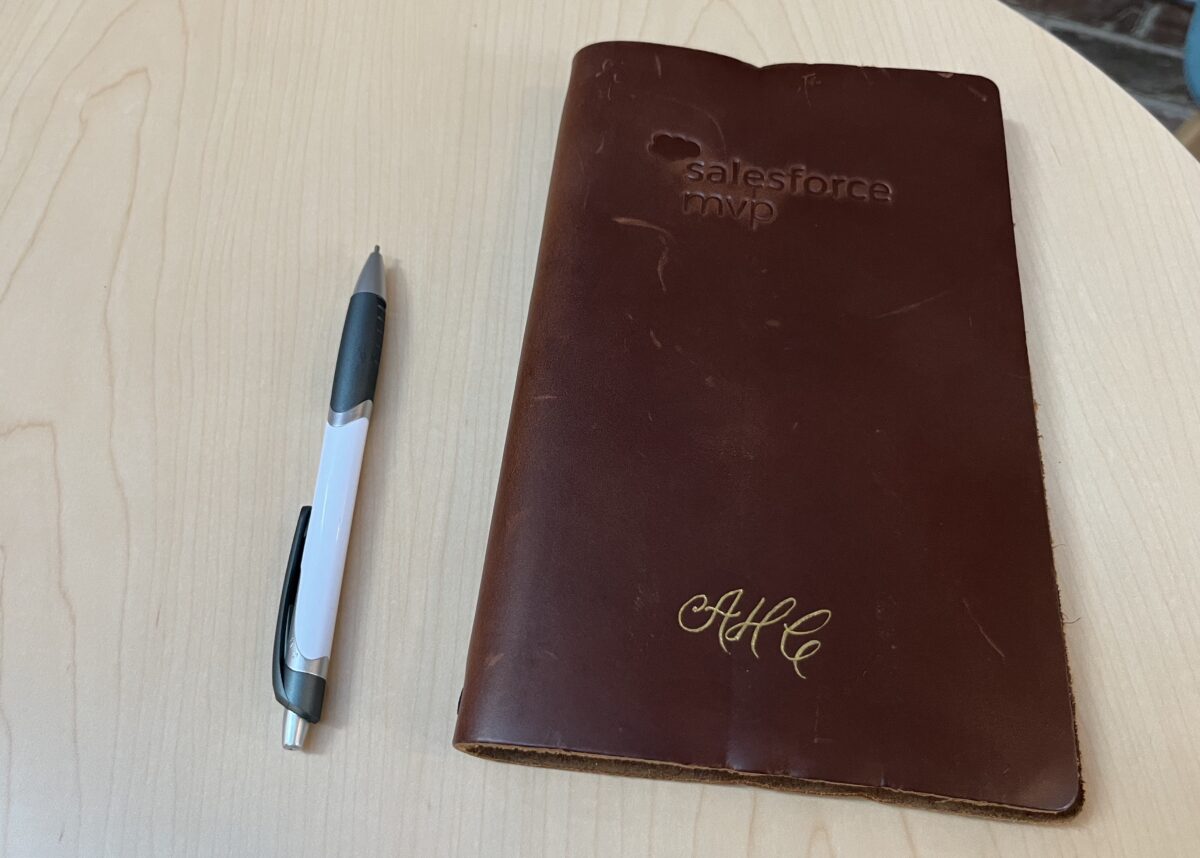Last year I wrote several pieces on writing for Developer and Consultants (the writing category will bring them up). That series became a talk on broader communications skills that I gave at Dreamforce 2024, and other settings – including twice this month. Part of that talk includes a series of books and similar resources that weren’t part of the original series. I figured it was time to add them in here.
I want to be clear, these are not the only resources to help you be a better communicator. They are just some resources that I have found useful and I hope you might also find useful.
Basics
I generally list two works to help with the basic mechanics: Elements of Style and the Art of Public Speaking. Both are over a century old, and yet still commonly referenced and both still have useful advice.
Elements of Style
Commonly referred to as “Struct and White”, Elements of Style is a short and easy to consume guide to writing well in formal English. It’s an excellent starting place for improving formal writing. But it is just that: a starting place. It is committed to helping the readers understand the formal rules – the elements. Elements of Style is not committed to teaching style, or even encouraging your own personal voice. For those things you will need to explore further.
Art of Public Speaking
Dale Carnage wrote a series of guides in the first half of the twentieth century to help people (mostly men) perform better in white collar work places. He started almost accidentally with the Art of Public Speaking. Many of his guides are still commonly read and referenced – almost to the point of being cliché (How to Win Friends and Influence People is also his). While his works are certainly somewhat dated at this point, the basic instructions on how to use your voice, organize your thoughts, and even the practice exercises it includes are still extremely useful when working on how to improve your speaking presence.
Further Explorations
As you gain comfort with the formal rules and techniques, you may find you struggle to find your own voice within those rules. The good news is that you don’t actually have to follow those rules all the time – just when it suits your needs. But learning how to manipulate the rules gives you control and freedom over the language. You might also find you want tools beyond just words to accomplish your goals.
Test the Limits of Grammar
Lynn Tross’s Eats, Shoots & Leaves helps with the first of those two goals. She has an entertaining approach to looking at how and why punctuation matters. But she also makes it clear that some uses are about style as much as clarity. She encourages her reader to both take punctuation seriously and to have fun with it. With her insights you can think about how to bend, twist, and even break the rules outlined in guides like Stuck and White. I know several people who found her guidance helped them take more control over all parts of their writing.
Don’t Only Use Words
Dan Roam’s Blah, Blah, Blah provides ideas for how to handle the second of those challenges: what to do when words alone don’t work. It provides an overview of why and how to use images to help improve your presentations and writing. Like all the others it can give you ideas and inspiration. Where you go from there should be your own interpretation of those ideas and suggestions.
Keep Going
Reviewing materials that are meant to train you in basic techniques is necessary, but not sufficient. You need to take the time to see how other experts use those techniques in practice. The good news is that just about anything on a technical topic can be helpful here.
More Readings
For reading on technical issues I tend to personally suggest well known works. Books because well know, because they are good (usually). Books stay important because they have important ideas – even if we have moved away from the details.
Mythical Man Month, for example was often required reading for developers and project managers for decades. While we want to believe our field advances so fast that a book first written in the late 1960’s is ancient history, the content is surprising relevant. It has held on so long because Fred Brooks covered important ideas and because he expressed them well.
Speeches and Keynotes
Listening to speeches, watching videos of great talks can be excellent as well. The obvious choice here is to watch Ted Talks. The only down side to those is they can be intimidatingly good. They have an extremely high production quality, world renowned speakers, and a well trained team to make it all happen. While I find that content excellent and inspiring, I would never try to match their production quality for a talk I’m giving at a local user group meeting.
For that I look to more simplistic content. When I commuted by train many years ago I would listen to talks published on the old Conversations Network because they were interesting, audio only (so good for public consumption), and sometimes flawed – I could imagine myself giving talks like that. More recently I’ve taken up listening to podcasts from the Freakonomics Radio Network and other places that are polished and high quality, but not so much that you can’t imagine reaching their level. Particularly shows outside their flag-ship Freakonomics are a little rougher around the edges while still being a good listen with interesting ideas.
Practice
All of these resources are only useful if you put them to work. I’ll talk about this more in a future article, but to really get good at this you’re going to need to practice. Nearly everything in life improves through practice, including your communication skills. To really get good at this, plan to put in some work. And expect to fail sometimes. It’s how we all learn and grow.
As I said in my first post on this topic, communications skills for developers and consultants is an enormous topic. The plan for this series is evolving as I go. If you have suggestions or requests feel free to leave me a message.




